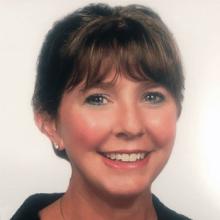Chronic disease is running rampant in the U.S., with about 60% of adults having at least one chronic condition and four in 10 having two or more, according to the Centers for Disease Control and Prevention. And while chronic conditions affect every demographic group, patients over 65 are at particular risk of developing them simply because of their age.
“Low physical activity is a great example,” said Brooke Buckley, MD, chief medical officer of Henry Ford Wyandotte Hospital, outside Detroit. The hospital is part of Henry Ford Health, which is a member of the AMA Health System Program that provides enterprise solutions to equip leadership, physicians and care teams with resources to help drive the future of medicine.
“Once we get much over the age of 30, our natural tendency is to lose muscle,” said Dr. Buckley, a general surgeon who is also board certified in lifestyle medicine and a past president of the Maryland State Medical Society. “We’re not running on playgrounds and climbing trees, so we lose muscle unless we’re intentionally building it.”
Fortunately, targeted help is available through lifestyle medicine, a medical specialty that uses therapeutic lifestyle interventions as a primary modality to treat chronic conditions such as cardiovascular diseases, type 2 diabetes and obesity.
In honor of Older Americans Month, May is marked each year as AMA Senior Physicians Recognition Month. Learn about the AMA Senior Physicians Section, which gives voice to and advocates on issues that affect senior physicians, who may be working full time or part time or be retired.
You already know what works
An American College of Lifestyle Medicine-produced booklet, “6 Ways to Take Control of Your Health,” lays out the six pillars of lifestyle medicine.
According to Dr. Buckley, physicians should take note of these pillars not just for how they can help patients—but also how they can guide physicians’ own behaviors.
“None of them are particularly exotic—these are things we all intuitively know to be true,” Dr. Buckley said. "But as we age, each of them tends to be harder to do, especially if they aren't hardwired habits. So it's even more important to intentionally build around them.”
The booklet goes into greater depth on each of these pillars:
- Whole-food, plant-based nutrition.
- Physical activity.
- Stress management.
- Avoidance of risky substances.
- Restorative sleep.
- Social connection.
According to the American College of Lifestyle Medicine, when these evidence-based, whole-person, prescriptive lifestyle changes are used intensively, they can even prevent or reverse chronic conditions such as cardiovascular disease, type 2 diabetes and obesity. The AMA Senior Physicians Section chose this as a focus because older adult physicians have an opportunity to advance lifestyle medicine in adjusting how they live their own lives. Learn more about the AMA’s innovative efforts to help physicians prevent type 2 diabetes and achieve rapid, sustainable improvements in hypertension control.
Do as I say—and as I do
“We always say: See one, do one, teach one,” Dr. Buckley noted. Physicians “talk a lot about eating healthy. We talk a lot about getting enough sleep. But many of us don't model that behavior at all—and that’s actually an opportunity.”
One of the things that makes lifestyle medicine so elegant is that physicians can have an impact just by how they conduct themselves in public, she said.
“If I'm a senior physician and I'm making healthy eating choices and I’m choosing to, say, walk instead of drive, I’m providing health to my community by modeling healthy behaviors,” she said. “Our senior physicians really have an opportunity to help us define this space by adjusting how they live their own lives."
Living by the pillars can also help older adult physicians figure out how to wind down their careers in productive and satisfying ways, Dr. Buckley noted.
“I love the idea that your practice can evolve as you age,” she said. “Let’s say you're a surgeon and you can't really be in the operating room anymore because your eyes or your hands have changed. Well, maybe you can be a mentor or a teacher, or maybe you can do postoperative visits in more of a practice extension kind of space. Retaining that social connection and that sense of purpose can give you the time and freedom to transition to a life outside of the practice of medicine.”





